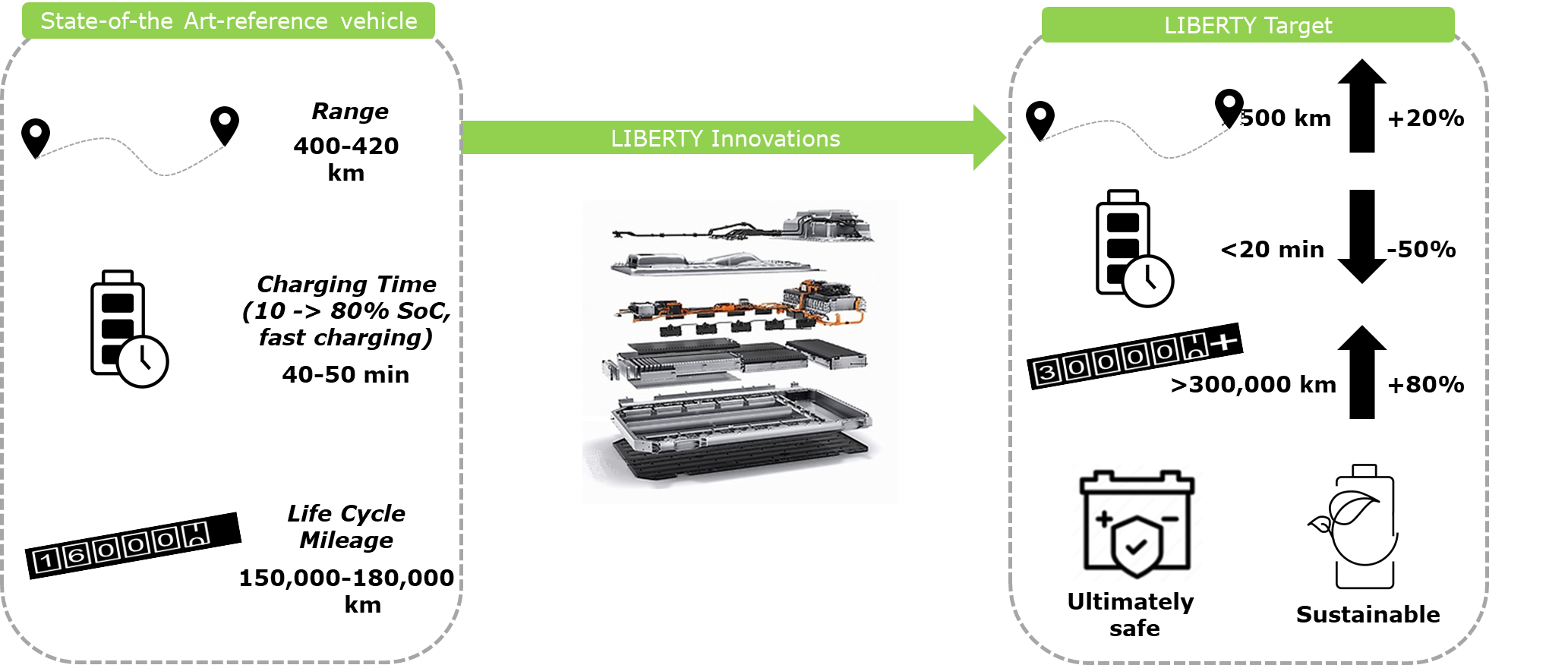Project Overview
Decarbonisation and emission reduction from road transport are the main drivers for the electrification of vehicles. The envisaged European CO2 fleet emission limits for 2025 and 2030 require a massive market introduction of battery electric vehicles (BEVs). Air quality regulations such as potential zero-emission zones will further drive the demand for these vehicles. The underlying technology of BEVs has sufficiently matured to begin a shift in mobility and BEVs are approaching cost neutrality compared to vehicles based on ICEs (Internal Combustion Engines).
There are still several challenges for EVs in general to become the standard in the customer vehicle fleet. The main barrier for customers to buy an EV is range anxiety I.e. the fear that they cannot travel far and quick enough as compared to the more conventional ICE vehicles. The most obvious solutions to this, is to increase the range and shorten charging times while keeping costs at a reasonable level. Another important aspect to consider is safety.
A single incident blown out of proportion by the media could turn the public against a (new) vehicle. For many customers, the reason to consider the purchase of an EV, is the fact that they want to contribute to a more sustainable society. However, there are also concerns around the overall environmental impact of EVs. In the current situation an EV-battery is considered acceptable for use if it still has at least 70 to 80 percent of its initial capacity. After that, it typically needs to be replaced. For customers it is important that the time it takes to get to this point is as long as possible, i.e. the battery lifetime (1st life) needs to be maximised. Although it seems very logical to reuse batteries that are no longer suited for a specific EV in another battery-powered vehicle or stationary energy storage, currently this approach is complex. The main challenge is the absence of a reasonable guarantee of the continued performance of batteries. Next to this, the BMS (Battery Management System) which comes with the battery pack is usually developed for a specific car and not suitable for other EVs or stationary energy storage use. If finally, the end of life of the battery system comes, it is important that recycling is efficient and safe. LIBERTY will address these issues via its 5 key objectives.

